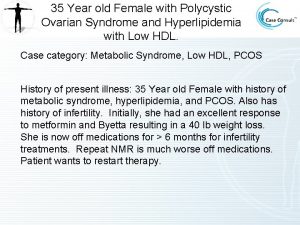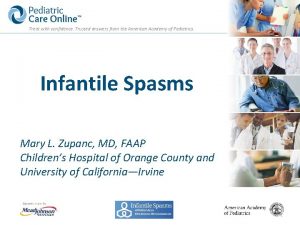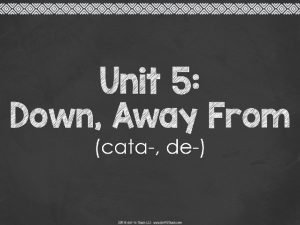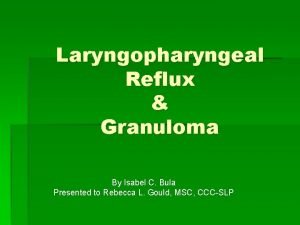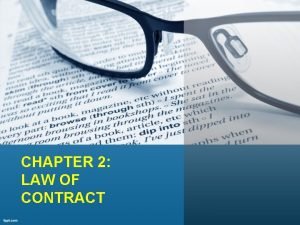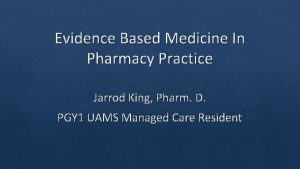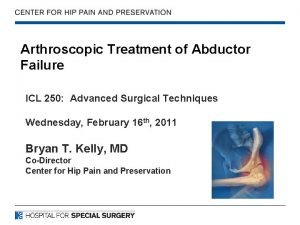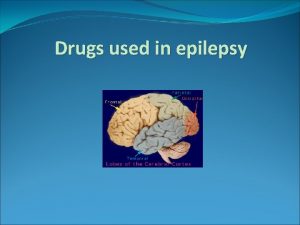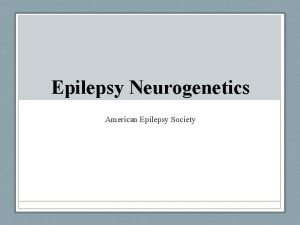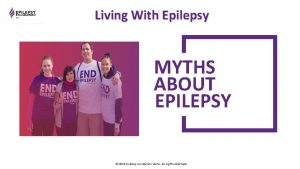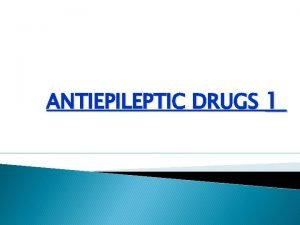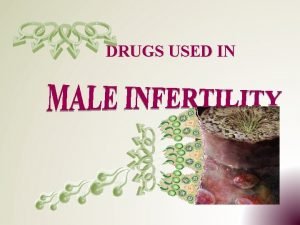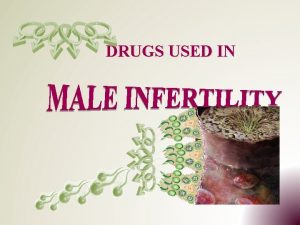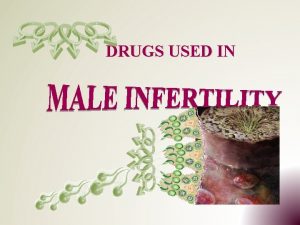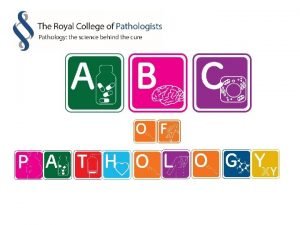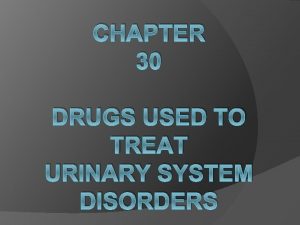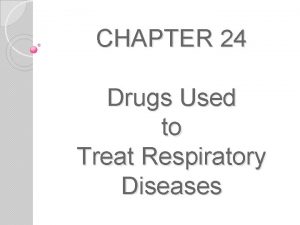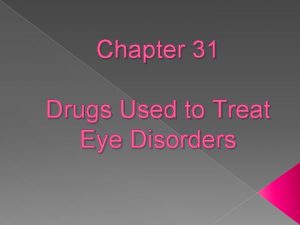Drugs Used to Treat Epilepsy OVERVIEW OF EPILEPSY
























- Slides: 24

Drugs Used to Treat Epilepsy

OVERVIEW OF EPILEPSY n Epilepsy is not a single entity; it is a family of different recurrent seizure disorders that have in common the sudden, excessive and disorderly discharge of cerebral neurons.

Etiology n The neuronal discharge in epilepsy results from the firing of a small population of neurons in some specific area of the brain, referred to as the primary focus. Primary epilepsy Secondary epilepsy

Classification of epilepsy

Mechanism of action of antiepileptic drugs n Drugs that are effective in seizure reduction can either block the initiation of the electrical discharge from the focal area or, more commonly, prevent the spread of the abnormal electrical discharge to adjacent brain areas.

ANTIEPILEPTIC DRUGS n Phenytoin is effective in suppressing tonic-clonic and partial seizures, and is a drug of choice for initial therapy, particularly in treating adults.

Mechanism of action n Phenytoin stabilizes neuronal membranes to depolarization by decreasing the flux of sodium ions in neurons in the resting state or during depolarization. It also reduces the influx of calcium ions during depolarization and suppresses repetitive firing of neurons.


action n Phenytoin is not a generalized CNS depressant like the barbiturates, but it does produce some degree of drowsiness and lethargy without progression to hypnosis. Phenytoin reduces the propagation of abnormal impulses in the brain.

Therapeutic uses n n Phenytoin is highly effective for all partial seizures (simple and complex), for tonic-clonic seizures, and in the treatment of status epilepticus caused by recurrent tonic- clonic seizures Phenytoin is not effective for absence seizures, which often may worsen if such a patient is treated with this drug.

Absorption and Metabolism n Oral absorption of phenytoin is slow, but once it occurs, distribution is rapid and brain concentrations are high. Chronic administration of phenytoin is always oral; in status epilepticus, it should be given intravenously. The drug is largely bound to plasma albumin. Less than 5% of a given dose is excreted unchanged in the urine.

Adverse effects n Depression of the CNS occurs particularly in the cerebellum and vestibular system, causing nystagmus and ataxia

Drug interactions n Increase in metabolism of other drugs by phenytoin: Phenytoin induces the P 450 system which leads to an increase in the metabolism of other antiepileptics, anticoagulants.

Carbamazepine n Actions: Carbamazepine reduces the propa- gation of abnormal impulses in the brain by blocking sodium channels, thereby inhibiting the generation of repetitive action potentials in the epileptic focus.

Therapeutic uses n Carbamazepine is highly effective for all partial seizures (simple and complex) and is often the drug of first choice. In addition the drug is highly effective for tonic-clonic seizures

Absorption and metabolism n n Carbamazepine is absorbed slowly following oral administration. It enters the brain rapidly because of its high lipid solubility. The enhanced hepatic P-450 system activity also increases the metabolism of other antiepileptic drugs.

Adverse effects n Chronic administration of carbamazepine can cause stupor, coma, and respiratory depression, along with drowsiness, vertigo, ataxia, and blurred vision.

Phenobarbital n Actions: Phenobarbital has antiepileptic activity, limiting the spread of seizure discharges in the brain and elevating the seizure threshold. Its mechanism of action is unknown but may involve potentiation of the inhibitory effects of 7 -aminobutyric acid (GABA)-mediated neurons.

Therapeutic uses n Phenobarbital provides a 50% favorable response rate for simple partial seizures, but it is not very effective for complex partial seizures. The drug has been regarded as the first choice in treating recurrent seizures in children, including febrile seizures.

Absorption and metabolism n Phenobarbital is well absorbed orally. The drug freely penetrates the brain. Approximately 75% of the drug is inactivated by the hepatic microsomal system.

Adverse effects n Sedation, ataxia, nystagmus, vertigo, and acute psychotic reactions may occur with chronic use.

Ethosuximide n Ethosuximide reduces propagation of abnormal electrical activity in the brain, and is the first choice in absence seizures Ethosuximide is well absorbed orally. It is not bound to plasma proteins. About

Benzodiazepines n Several of the benzodiazepines show antiepileptic activity. whereas diazepam is the drug of choice in the acute treatment of status epilepticus

 How do we treat the life the life how we treat
How do we treat the life the life how we treat Which seedless plants have been used to treat bee stings?
Which seedless plants have been used to treat bee stings? Is byetta used to treat pcos
Is byetta used to treat pcos Which seedless plants have been used to treat bee stings?
Which seedless plants have been used to treat bee stings? Fetal phenytoin syndrome
Fetal phenytoin syndrome 7 tray in labour room
7 tray in labour room Treat with confidence
Treat with confidence Invitation to treat
Invitation to treat Treat someone with contempt
Treat someone with contempt Treat with sincerity
Treat with sincerity To kill a mockingbird racism chapter 1
To kill a mockingbird racism chapter 1 Mylantah
Mylantah Trick or treat smell my feet give me something good to eat
Trick or treat smell my feet give me something good to eat Mole day treat ideas
Mole day treat ideas Invitation to treat
Invitation to treat Treat the earth well
Treat the earth well St lucy's home raised by wolves characters
St lucy's home raised by wolves characters How does paris react to juliet's death
How does paris react to juliet's death Epidydmis
Epidydmis How does mercutio treat the nurse
How does mercutio treat the nurse Cambysus
Cambysus How did the scotch half breed treat the dogs
How did the scotch half breed treat the dogs How to calculate number needed to treat
How to calculate number needed to treat Who is mr. kirwin and how does he treat victor?
Who is mr. kirwin and how does he treat victor? How to treat bursitis in the hip
How to treat bursitis in the hip


